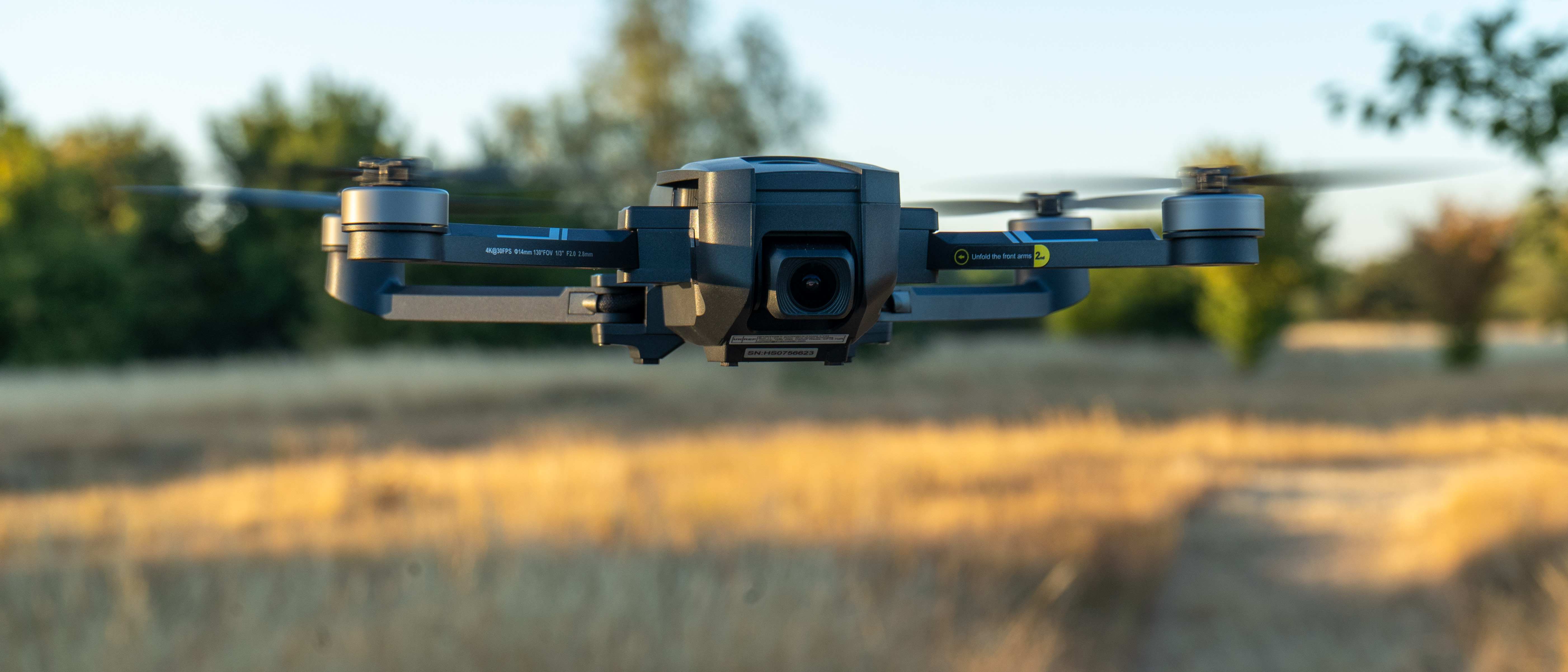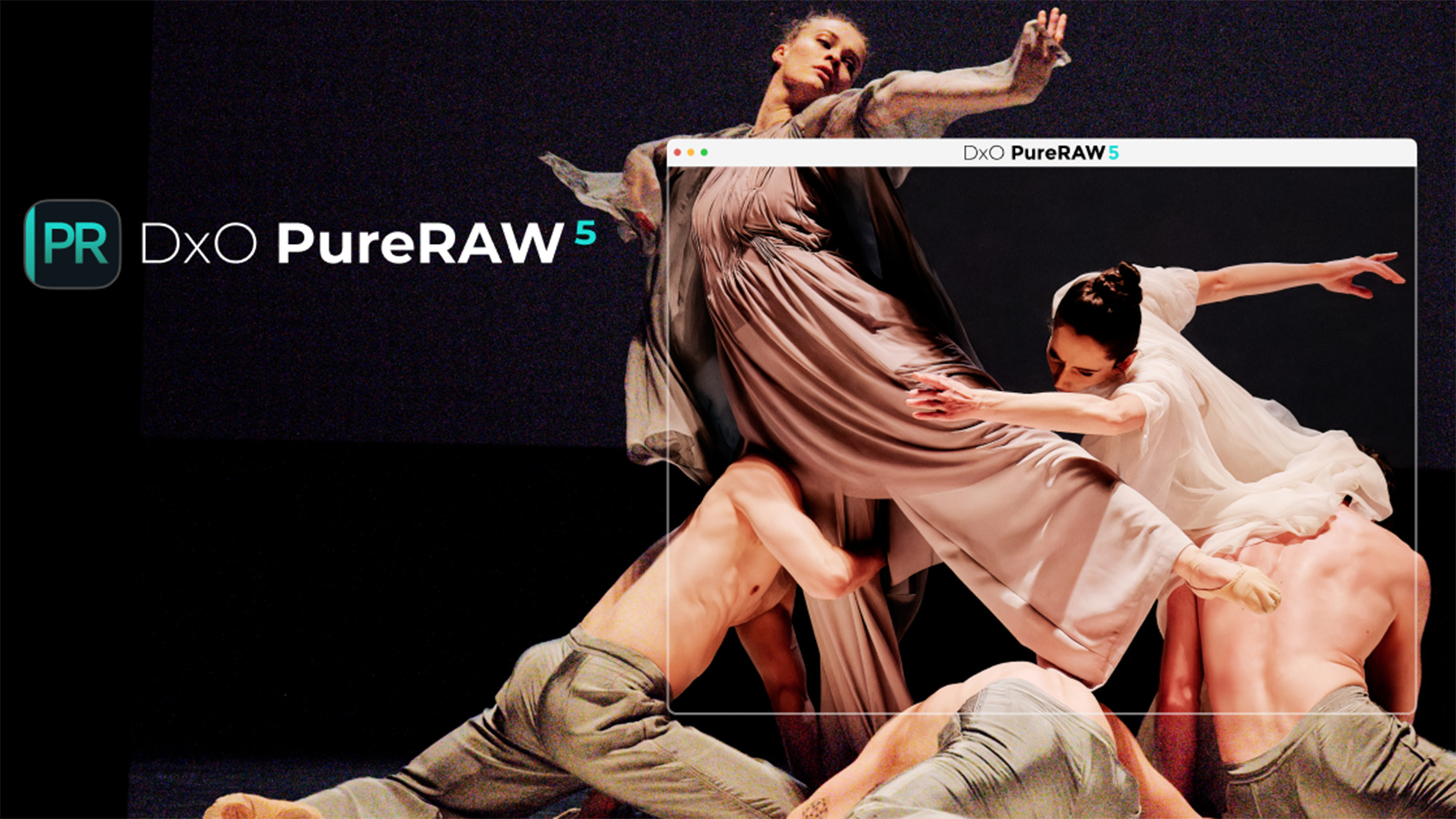Digital Camera World Verdict
The HS720E’s 4K camera doesn’t have a gimbal for perfect stability, yet it manages to capture surprisingly steady images which are enjoyable to watch and crisp in detail. Stills aren’t so good, but Photoshop can still make them useful. Overall this drone has a lot to offer a creator on a budget, or someone looking for a toy which won’t just be abandoned after the first use.
Pros
- +
Landing lights and optical flow sensor
- +
Effective electronic image stabilization
- +
4K video lives up to expectations
- +
Robust-feeling drone
- +
Good quality case
- +
Two batteries offer over 40 minutes of flight total
Cons
- -
Slow mode is too slow outdoors
- -
Battery charging takes 5 hours
- -
Above 250g limit
- -
Controller uses AA batteries, not rechargeable
- -
Frequent calibration needed
- -
60fps mode produces poor quality image
Why you can trust Digital Camera World
Easily portable travel drones are an immensely popular category, whether for pure fun or creative aspiration. The market leader DJI, however, leans toward quality features and high pricing (their packaging looks a lot like Apple’s) which leaves a clear opening for a little compromise.
Holy Stone in fact offers drones for nearly half the price of the HS720E and claims they produce 4K. That wasn’t our experience – see our HS175D review. This drone, however, certainly does produce 4K video, putting it (theoretically) on a par with DJI’s Mini 2. Cost-wise, however, the drone comes in significantly below that while at the same time including extras like spare batteries which DJI expect customers to dig deeper for.
The question is whether, by prioritizing value, Holy Stone are providing a genuinely useful offering to their customers. The principle difference between this drone and pricier alternatives is the use of electronic image stabilization (EIS) as opposed to a mechanical gimbal. The latter keeps the camera physically steady even as the drone leans to compensate for flight, and is favored by professionals. This review will look at how good a digital alternative can be, and who it might suit.
What’s in the box?
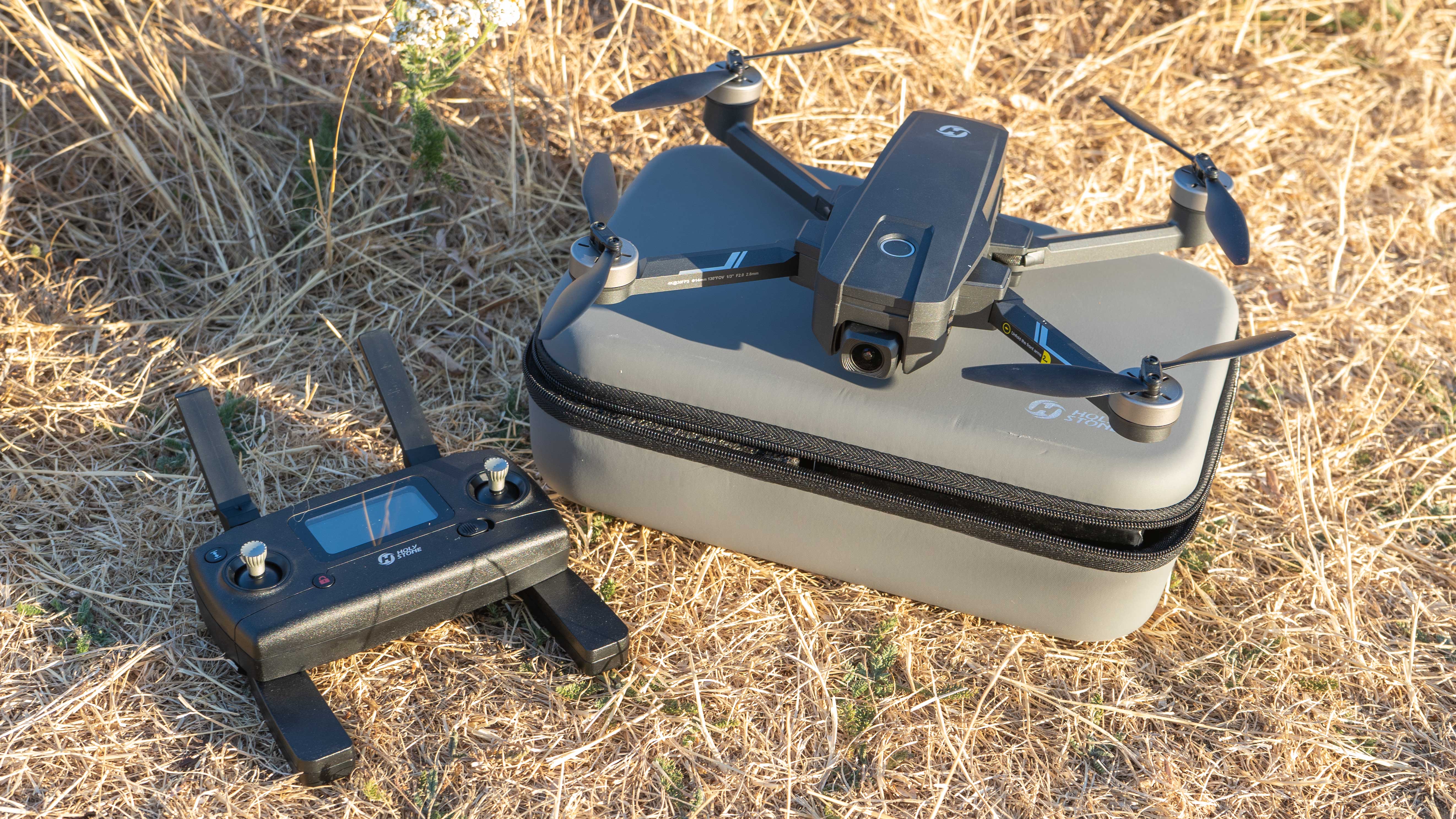
Opening the box reveals a top quality rubberized zipped hard case which, in turn, contains the drone, controller and accessories in custom-fitted places. This goes a long way to dispel concerns about this being a budget drone. Some of the accessories, including spare propellors and a good length manual, are in a further zipped section at the back, while a smaller box holds a compact charging hub which can be left to charge the two batteries without interference.
There are some oddities – additional foam around the batteries’ contacts begs questions about their resilience – but it is a better fitted case than many DJI ‘Fly More Kit’ ones without requiring extra payment. The spare battery and a multiple charger are also included rather than an upgrade. (For reference the Fly More kit with two extra batteries, a case, and a charging hub for the DJI Mini 2 add $150 / £130 to the price.)
Design and controller
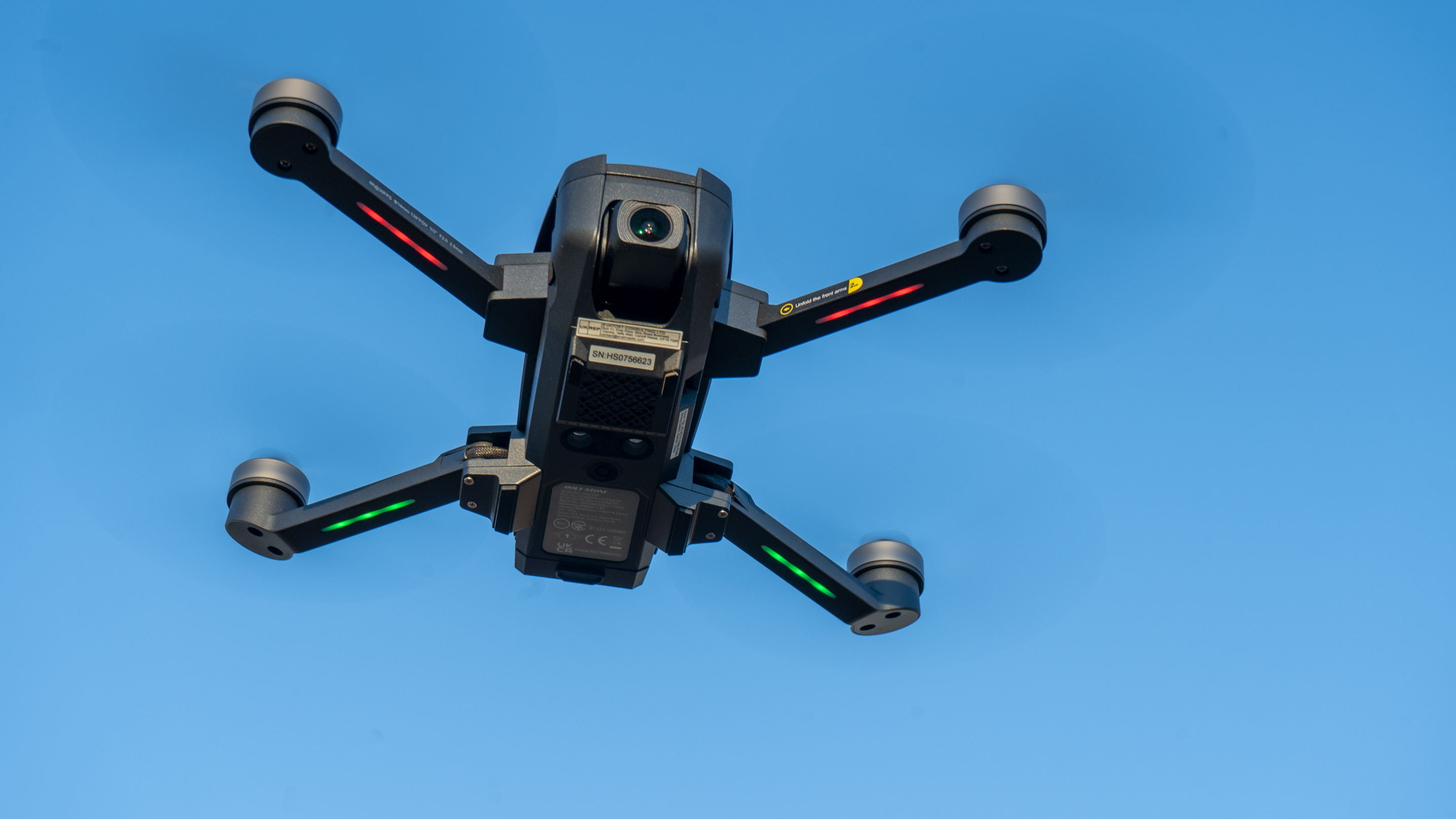
From the top, the HS720E looks and feels like many medium-sized folding drones. Lifting it out of the case and you immediately feel its satisfying heft – it weighs 557g (nearly 20oz). That is, of course, well over the 249g point after which registration will be needed, but this is usually a reasonably straightforward bit of bureaucracy.
The base of the drone has an optical flow sensor (to prevent drift without GPS) and two landing lights which can assist that sensor in the dark. Color-changing LED strips in each of the fold-out arms help provide feedback.
At the front is a camera; it is motorized in that it can be tilted remotely using your right thumb. It is not, however, on a gimbal – instead that mechanism is on a dampening mount to absorb some of the drone’s vibration.
The controller design seems to owe something to the Mavic 1, with a backlit LCD providing feedback on basic drone functions. Unlike most controllers – even others from Holy Stone – it is not rechargeable but powered by two AA batteries. This seems an odd choice given plenty of time is spent charging batteries: a rather slow 5 hours per battery given they offer 21 minutes flight. Surely we could charge the remote at the same time rather than power it with landfill?
The phone grip is best described as adequate; it fights a bit for space with the dual antennas, and the weight of our iPhone Pro Max seemed to be pushing the hinge to its limits, but it worked. Plus the wi-fi connected without a cable, which is nice. Overall, then, the controller is a bit plasticky – and has a dummy finger control on the left side – but easy to use and wholly adequate.
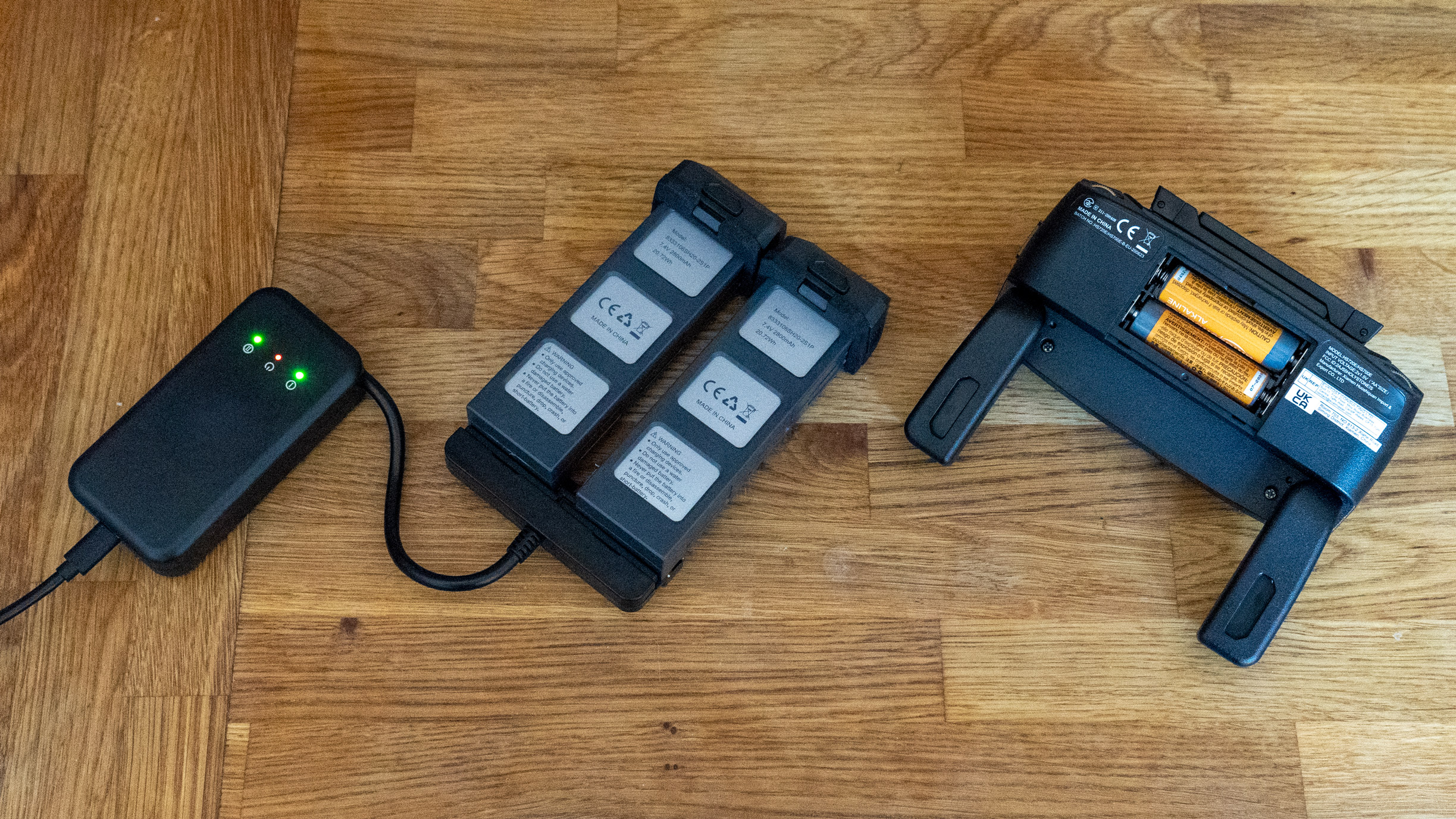
Flight characteristics
After we’d worked our way though calibration (we thought) and got flying we had a surprise – the default ‘Slow mode’ didn’t seem to give us enough influence to control the drone. Initially it was drifting in very, very light wind despite having acquired enough GPS satellites despite us following all the steps. Two rough landings later we decided to change the speed mode to High and that solved it – the drone was suddenly under our control.
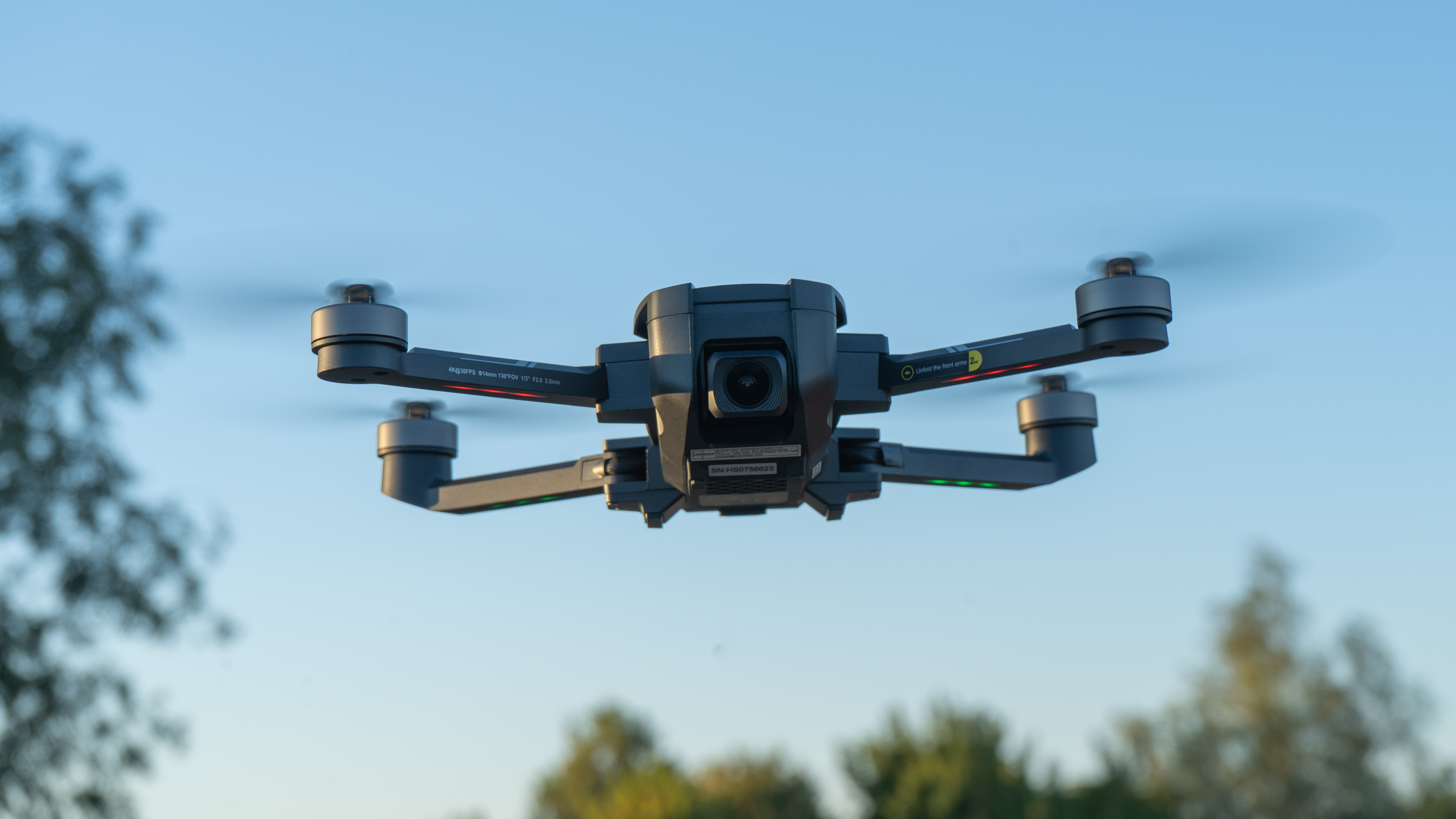
So, not a great first impression, but afterward we tried again (it’s recommended to calibrate every time you swap the battery). Things did get better. An irritation is that the gyro is calibrated by a different command to the compass. It must be done while the drone is on a flat surface and the visual feedback is given by the lights on the bottom of the drone which are virtually impossible to see reflected on the ground on a bright day.
All of this soon becomes second nature, though, and flying the drone in standard Mode 2 works well enough. We were comfortable flying to at least 200m (700ft) from where we stood before developing concerns about the signal, which more than adequate for a drone of this size.
Tweaking the camera angle using the wheel-like control where the left forefinger rests makes shooting relatively easy, as does the physical shutter button on the left shoulder. We like the simple spin up (or ‘unlock’) button too.
HS720E photos
The camera is significantly more capable than other drones in the budget category – as you’d hope since it is at the higher end. Unlike many, the drone offers some limited manual controls, over ISO (100 to 1600) and White Balance. Both default to Auto, but it is good to have some control (if only to dissuade the drone from applying auto during a shot).
We were less convinced of the benefit of Greyscale, Bright and Nostalgic effects. Bright, especially, seemed just to be a high contrast high saturation option. Nevertheless better to have the option than not.
In terms of quality, there is some evidence of fringing, while a subtle approach means that the images also clearly show the geometry expected of a wide-angle lens. Holy Stone are not one of the manufacturers listed in Photoshop, too, so correcting it will be a manual choice but might well be worth a few moments. If you have the software it’ll also be invaluable in correcting the horizon. In video it can be fun to lean into turns with the pilot, but it makes less sense in stills.
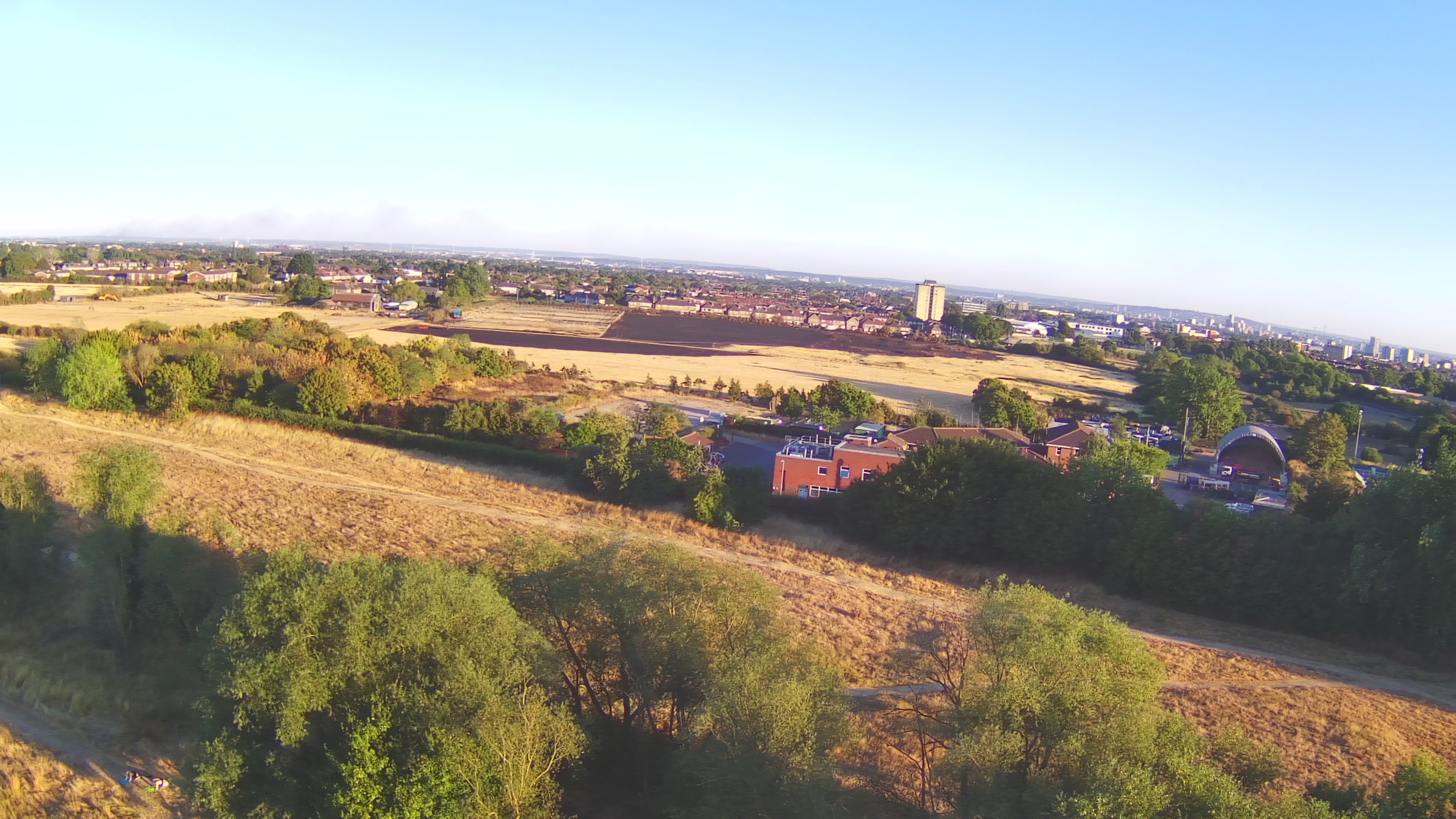
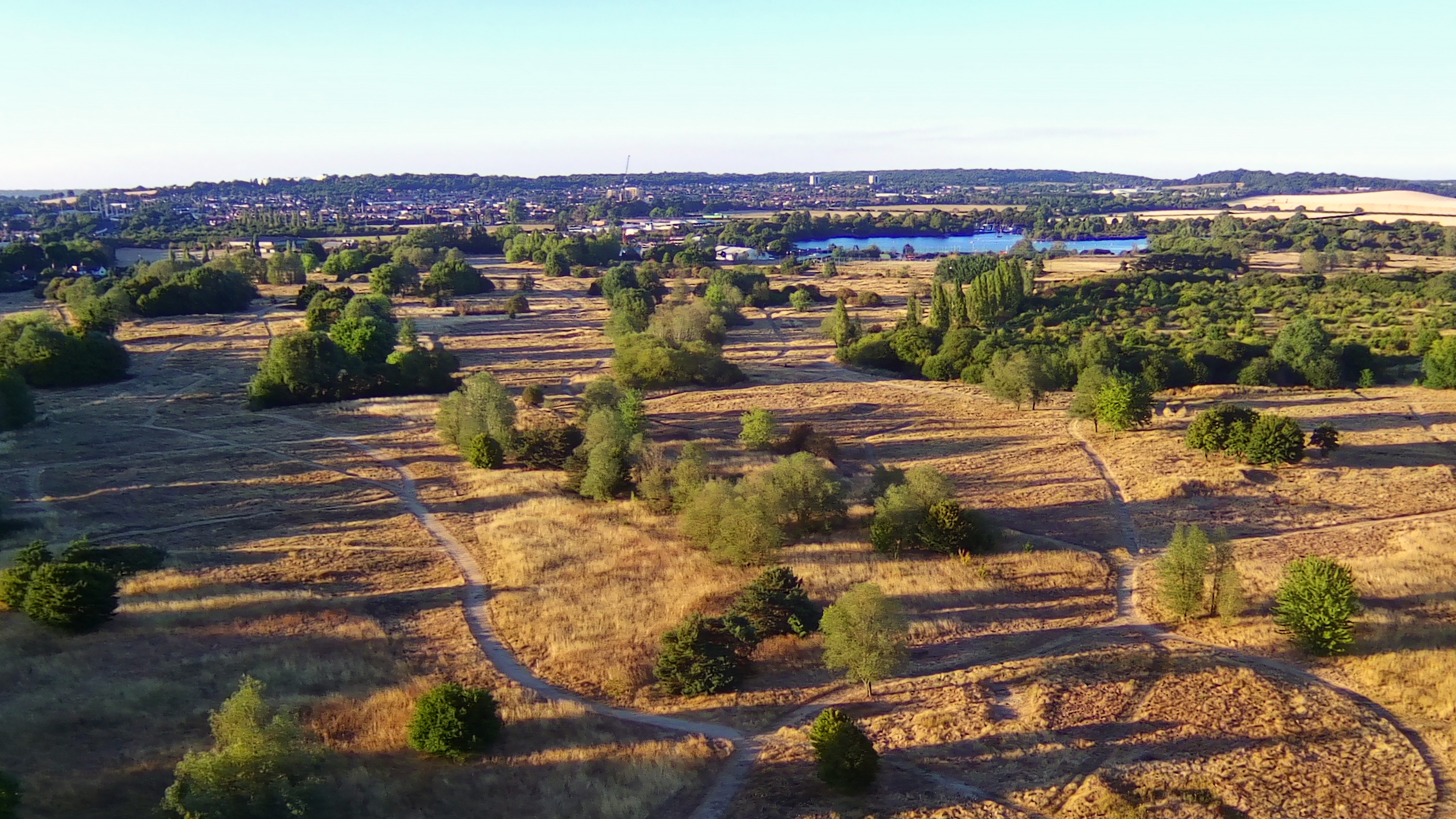
HS720E Video
The crucial aspect of this drone’s video output is the image stabilization and we’ve got to say that we were impressed. Although occasionally evident, especially near the corners, the correction is good and seems to handle turns as well as vibration. The 4K 30fps video is around 55mbps which means that artefacts in general aren’t too much of an issue and the image is sharp.
Curiously the 1080P 60fps image is much poorer; it has the softness of you’d expect from digital zoom – a shame as having the option of smooth 60fps is nice.
The camera will always lean with the drone’s direction of turn. On a DJI drone this effect is called ‘FPV mode’ in the gimbal settings and it does make for very watchable and engaging content when the drone is moving at speed. Because it is also capable of travelling slowly then – if the wind is low – careful piloting can also get even feeling shots.
Video sample: Our sample clip is perhaps a little unfair as we barely stop so most of it is shows the camera leaning. For the most part though the quality is good and the camera copes with a tricky low sun. More contrast would have been better though; the shadows and blacks seem a little too bright. This can be corrected with a filter in editing.
User experience
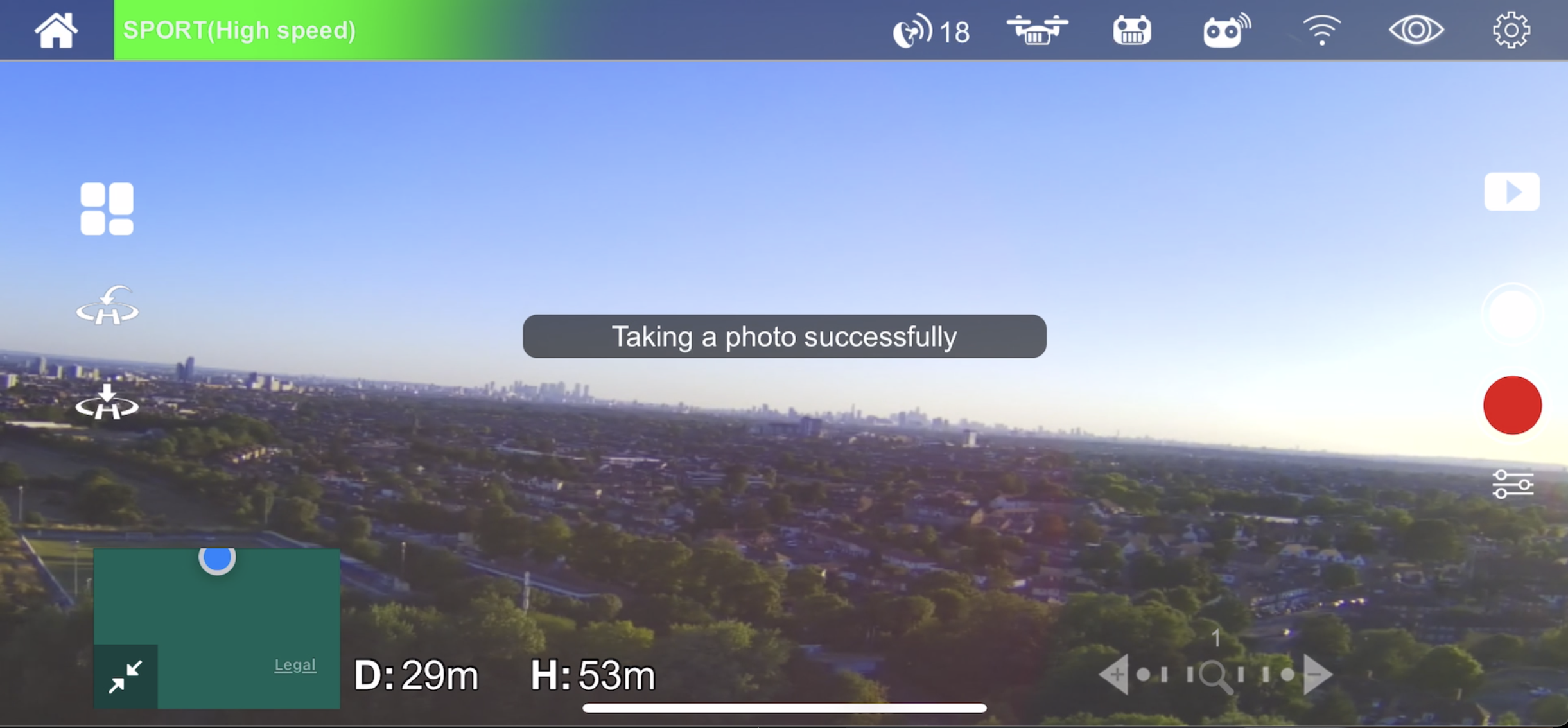
The app, Ophelia GO, is similar to – but different from – the less creatively named “HS GPS V5” we tested on the Holy Stone HS175D drone. It seemed less buggy, and as mentioned offered more photography features. It could still stand to be a little smoother in use, and there are some blunt messages that might be poor translations, but the key functions are easy to reach.
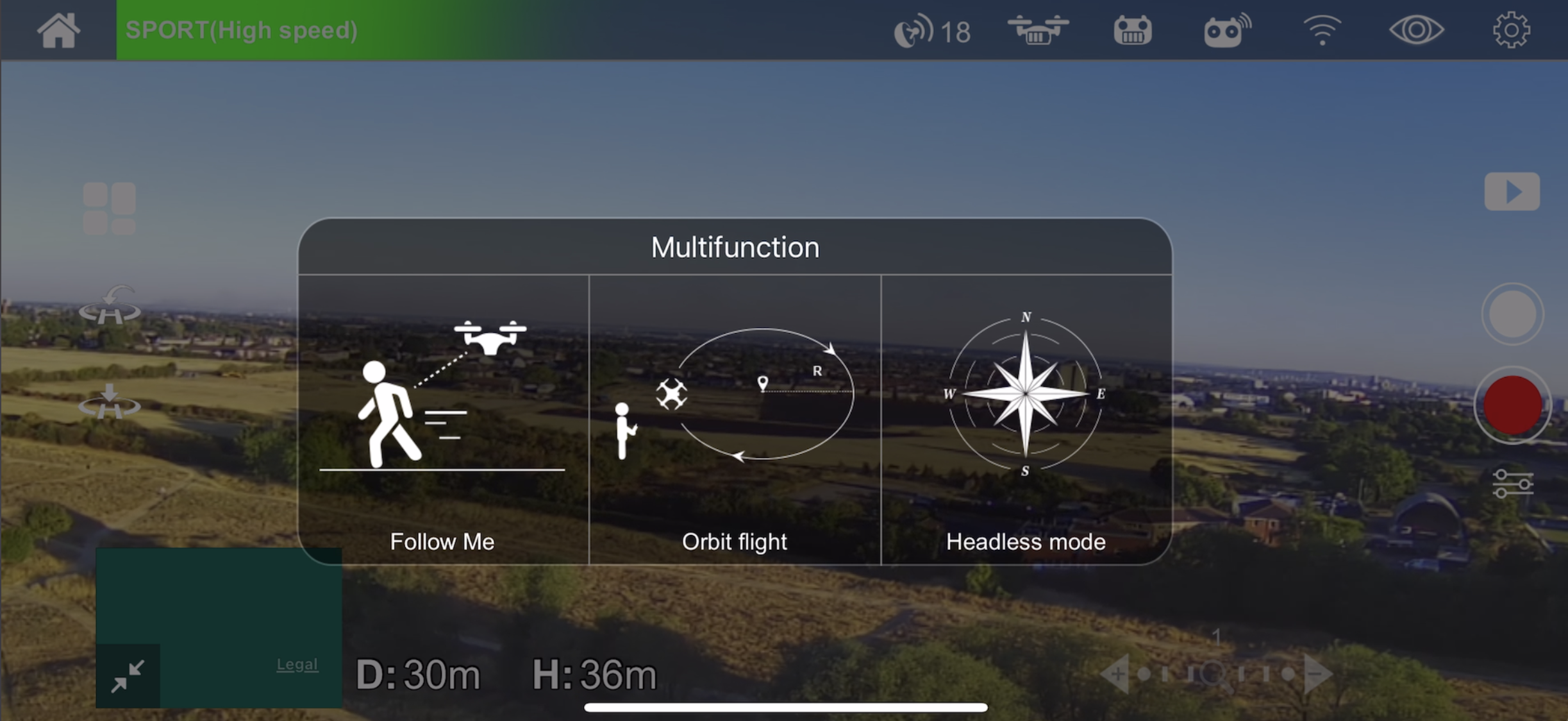
The app incorporates straight forward ‘smart’ features. We’d have preferred it if adjusting the orbit distance wasn’t in the settings menu but the orbit mode itself, but ultimately this is just a couple more screen taps. There is also a follow me option which tracks your phone GPS so can follow you behind obstacles like trees comfortably. Indeed it can much more effective than AI-intensive visual solutions, though it does need the subject to grasp the controller!
It is not immediately obvious, but tapping on the map brings up and a tap-to-fly – otherwise known as waypoint – mode. This is a nice touch which works well and is fun to have. All the usual refinements (one click return etc.) are available too, and there is an image viewer page for downloading and sharing your recordings without needing a computer.
Holy Stone HS720E verdict
The HS720E is an excellent budget drone, and comes with a generous selection of extras (the additional battery and case) as well as producing surprisingly good video. Once the start-up experience has been worked through a few times, it becomes easy to use and the controller and software make for handy visual feedback (though we could live without some of the beeps).
That said, it is still worth considering DJI’s entry level Mini SE. It might not have the resolution, or the extras, and still costs a little more, but it does include a powered gimbal while sneaking in under the 250g threshold. The weight of the HS720E will be a problem for some who don’t wish to register, or want to operate near people, but it does seem to give it a sure-footedness one it climbs above the trees which not all budget drones offer.

With over 20 years of expertise as a tech journalist, Adam brings a wealth of knowledge across a vast number of product categories, including timelapse cameras, home security cameras, NVR cameras, photography books, webcams, 3D printers and 3D scanners, borescopes, radar detectors… and, above all, drones.
Adam is our resident expert on all aspects of camera drones and drone photography, from buying guides on the best choices for aerial photographers of all ability levels to the latest rules and regulations on piloting drones.
He is the author of a number of books including The Complete Guide to Drones, The Smart Smart Home Handbook, 101 Tips for DSLR Video and The Drone Pilot's Handbook.
